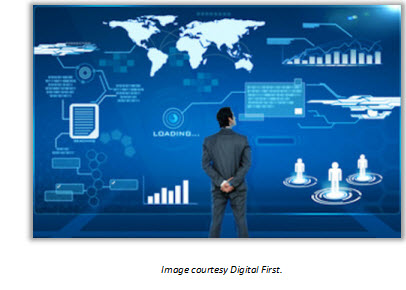Guest post by Andy Jones, Vice President, Workflow Automation, Large Enterprise Operations, Xerox
As organizations begin to plan for 2016, one area that will continue to get a lot of focus is the future of work. For years, industry analysts and experts have studied how technology is shaping the future of work. Now, organizations are starting to see how it will directly impact every department in their enterprise – bringing on a variety of new challenges to deal with in order to keep up with the times, including:
- Diverse workforce: Just this year, a Pew study found that millennials have surpassed baby boomers in the workplace to become the largest share of the U.S. workforce. While millennials are often digital natives and comfortable with today’s evolving technology, they also often have a much different learning style than boomers. In addition to designing for mobility, – with increasing importance on providing easy consumer-style apps and interfaces – organizations are faced with re-designing training and learning curriculum to facilitate adoption of technology in a way that suits the millennial generation.
- Virtual teams: Advancements in communication and mobile technology have broken down the four walls of the office. Increasingly, employees are working on-the-go and with team members all over the globe. Today’s most successful organizations are finding ways to empower employees to work better by enabling remote work and collaboration with virtual team members across a variety of devices, and with simple collaboration tools.
- Partially digital: Many organizations are implementing solutions that digitize and automate part of a process, while other parts are still manual and paper-based. There is still an opportunity to fully digitize these processes to make work, work better and keep up with consumers’ changing communication preferences.
- Content chaos: According to Gartner, by 2020 more than 25 billion connected “things” will be in use, resulting in an explosion of data and information. Organizations are tasked with finding ways to leverage this valuable information to generate better, more informed business decisions. 2015 was the year of the data breach, and there is also an increased emphasis on protecting and securing personal customer data.
- Legacy IT: Legacy IT systems are complex and hard to customize and adapt, making it difficult to deploy new technology to keep up with the evolving workplace.
While these challenges can be daunting, it’s important for organizations to focus on evolving a few areas or processes within the business rather than trying to transform an entire organization. By taking this approach, organizations will be able to take best practices learned and apply them to other parts of the business.
If you’re not sure where to begin, try starting with evolving the lifeblood of the business – information and data. Content management solutions have been around for years and improved the flow of information throughout an organization. However, many systems are launching new versions that are designed to help enterprises successfully embrace the future of work and address the five office challenges outlined above.
Modernized enterprise content management (ECM) solutions must be easy to use and intuitive, so workforces – no matter how diverse – can quickly learn to properly use the solution without the help of IT and deliver value from day one. If they’re simple and easily adopted, ECM tools can make work, work better by streamlining, speeding up and fully digitizing paper-based processes to improve productivity and efficiency.
Once organizations are fully digital, ECM systems give employees the tools they need to store, manage, retrieve and analyze the growing variety and abundance of business-critical data to increase collaboration with virtual teams and mobile consumers. Security features allow organizations to permit access to different employees and departments to improve customer data protection and help enterprises meet increasingly stringent compliance regulations. Lastly, ECM solutions add more value when they’re customizable to meet an organization’s unique business processes, and flexible so the solution can scale and grow as the organization expands.
For more information about how Xerox’s new content management solution, DocuShare 7.0, can help bring your organization into the future of work, visit: http://docushare.xerox.com/.



